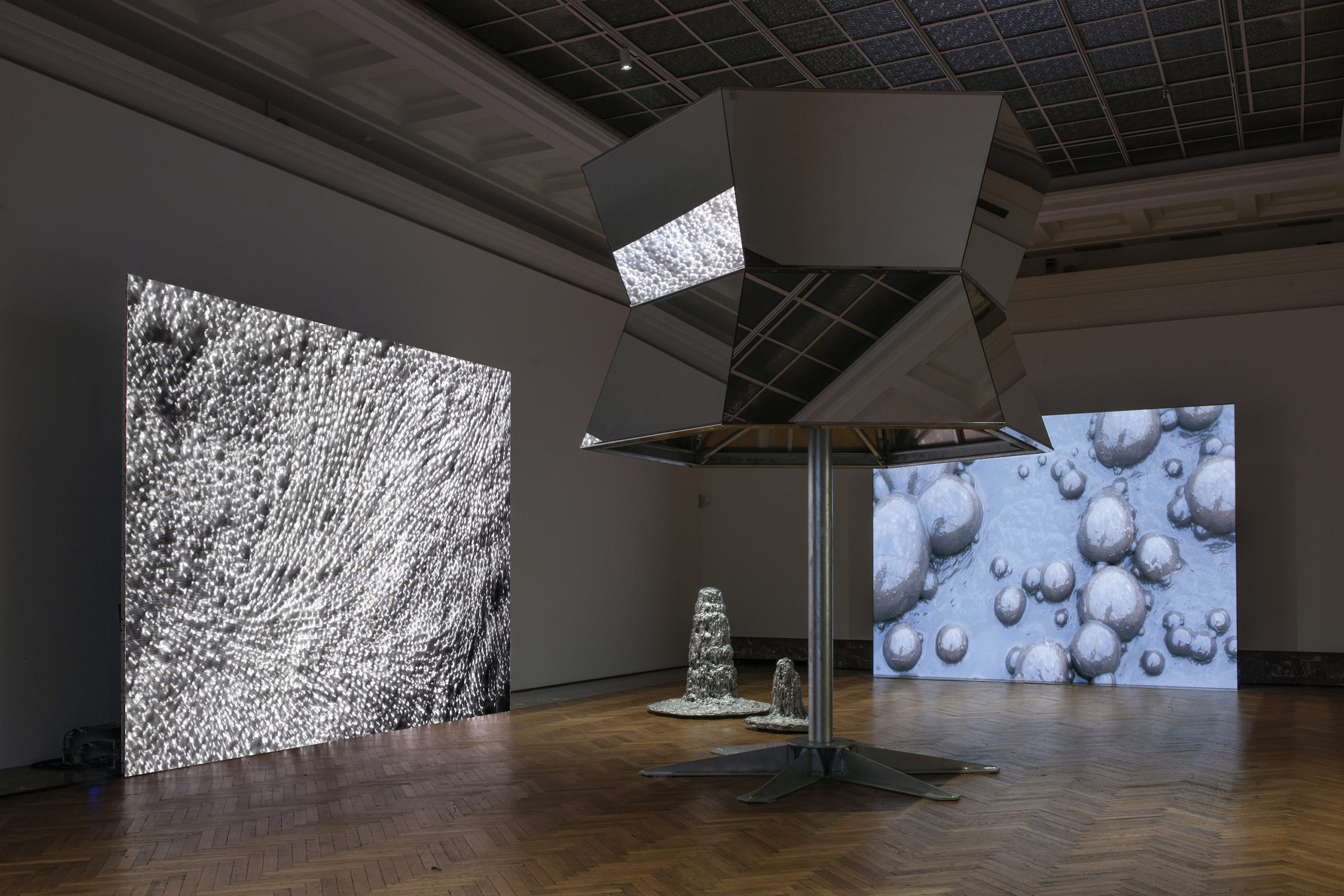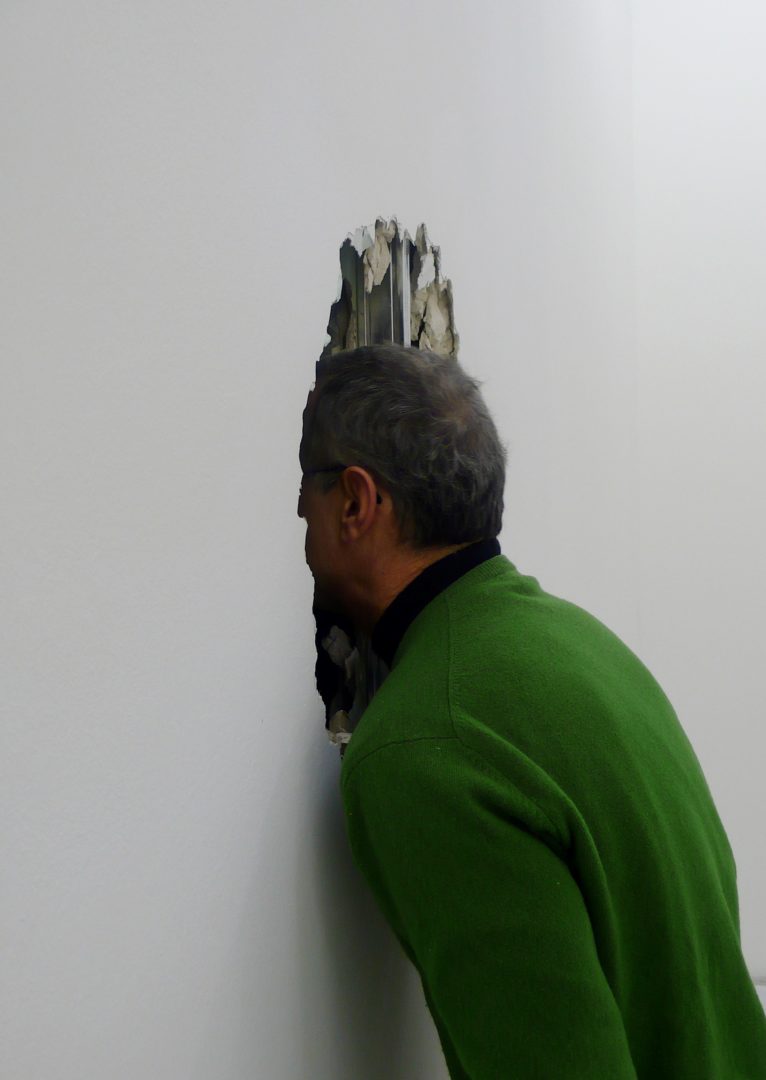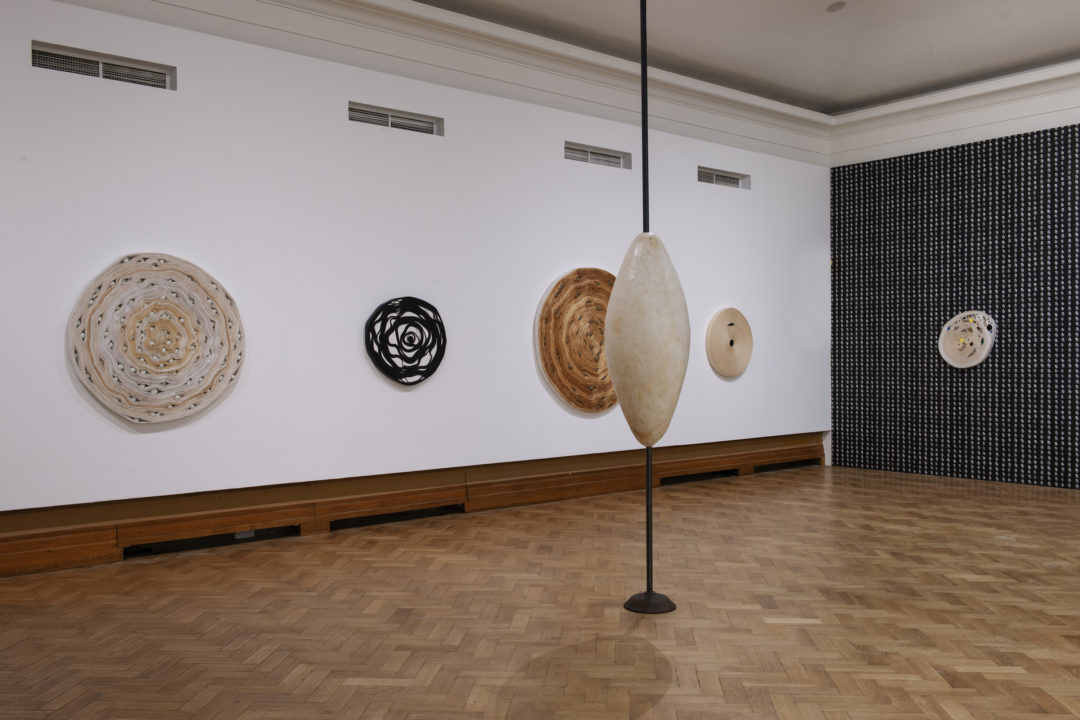Michel François

BOZAR/Palais des Beaux-Arts, Bruxelles
16.03 – 21.07.2023
The Michel François retrospective currently on view at the Palais des beaux-Arts (Bozar) in Bruxelles—where he lives and works—is an opportunity to revisit 40 years of artistic production while also sketching a portrait of one of Belgium’s most singular artists. Beginning in the 1980s, François constructed an œuvre which resisted categorization while also remaining solidly coherent—an œuvre which was founded on the receptivity of the world, as well as an attempt to translate what he referred to as “the beauty of experience.” With a poetic touch, the artist questions our surroundings: materials, nature, situations, all of which, for the artist, provoke a fascination which lies at the origin of his predilection for concepts and plays on representation.
Michel François uses an array of media, including photography, video, performance and installation, which he approaches from a sculptor’s point of view, often combining them to create pieces which dialogue with one another, forming “a subliminal network of motifs and values which can only be apprehended by the confrontation of the works in a shared space.” Each of his exhibitions therefore becomes a laboratory which renews itself every time, a palimpsest. By creating exhibitions in which the works echo with one another from one gallery to the next, he experiments never-endingly with notions of space, of volume and equilibrium which define representation. Similarly, he uses a multitude of materials, whether natural—dandelions, cacti, sponges, water—or artificial, such as newspapers, glass, brick walls, ink and everything in between, including even new technologies, in order to engender hybrid forms which attempt to restitute movement or instantaneity. Michel François is fascinated by signs of life. His practice oscillates between image and sculpture, two and three-dimensionality. Familial inheritance undoubtedly comes into play here: the artist was trained by his father—a painter, and his mother—a dancer and sculptor. “I figured that sculpture was a halfway point between dance and painting,” he explained.

© Photo Sylvain Courbois
Theatre studies at the National Institute of the Performing Arts (INSAS) in the Wallonia Brussels Federation instilled a sense of the decorative in the artist, a desire to occupy space, making it an artwork in and of itself. The concept of a “total work of art” occupies a central role in the artist’s practice. At the Palais des Beaux-Arts, he measures the different spaces in order to envisage them as an extension of the artist’s studio. “Most of the time spent in an atelier, contrary to what most people think, is spent doing nothing,” he provocatively stated, referencing the time spent dedicated to the thought process. And yet, he works with completely banal materials, including found objects which he transforms. Michel François investigates the ordinary, using a simple approach. Breathing, yawning, dispersion, disappearance, repetition, equilibrium; all are banal, everyday phenomena which have become so internalised that they become invisible. In his studio, the artist handles everyday objects and gestures, rearranging them so that they may once again take on meaning. Recycling is a part of the genetic makeup of Michel François’s œuvre. Almost all of the works are involved in an incessant recycling process. Duration, the passing of time combined with coincidences; all are given equal importance to the artistic gesture, since the artist sometimes positions himself as an alchemist or sorcerer’s apprentice; an observer of transformations which he himself has instigated. For example, a drop of water which splashes down on a salt slab with the regularity of a metronome, which will slowly yet inexorably disappear. Inversely, there is the immediacy of splattered aluminum or bronze going “splash”. By capturing the speed, the fulgurance of metal as it overflows from the melting pot, spreading out as it comes into contact with the ground, it appears to come alive. Form is borne out of experimentation, out of the randomness it contains.
Michel François’s works can be apprehended through the observation of these metamorphoses, mutations and sedimentations of a work in progress. For Guillaume Désanges, “in a world which is clearly marked and hierarchized, but which is much more chaotic and out of control than it appears, the fundamentally sculptural work of Michel François is the inverse of this—while clearly chaotic it is subtly contained and represents a sensorial and ideological model for immediacy.” In this way, the work has an ephemeral, elusive quality.

Photo : DR. Courtesy de l’artiste.
“The atelier is a place where neither time nor the past exist,” observes François Piron in the Brussels exhibition catalogue. “Works created 30 years ago are simply hung or placed next to an object that the artist made in the past week.” No governing hierarchy exists between the works. Placed directly on the ground, fastened to the wall, or set upon plinths, they remain in constant movement, waiting for a situation to declare itself. “It’s as if there were an exchange going on between studio sculptures and other, more directly political things,” the artist explained. “The objects attract or repulse other objects, through affinities, proximity or capillarity. By simply moving one of the magnets, the entire ensemble is transformed into a different composition,” adds François Piron. The artist uses Gilles Deleuze and Félix Guattari’s concept of the rhizome as a metaphor to describe his practice. In other words, an ever-evolving structure shooting out horizontally in all different directions, with no upper levels.
Michel François tackles unwieldy subjects which the art world would rather ignore. “For me, the idea is to seek out an approach by which things which are reputedly difficult or tiresome can take on a different status for just an instant,” he adds, taking on the bad in order to create an add-on which can provide a tiny bit of relief to the tragedies humankind engenders. For example, a strange drawing resembling a diagram leaves traces in the surface of a wall, in the wood it burrows itself into, connecting one point to another. Each point corresponds to a military force involved in the conflict in Syria. But who is fighting against whom? The artist has taken great care not identify the assailants, reducing the wall piece to an abstract drawing. This martyrized wood nonetheless resembles a battleground. In his “jardin contre nature” (Unnatural Garden), the gardener is represented by the presence of a jacket and boots, and is made up of a collection of greenery, plants, leaves, attached with magnetic ribbons to large pieces of galvanised steel sheeting which have been mounted on the wall. Here, the artist introduces the football—a cultural symbol if not the ultimate cultural symbol—via a system of image transfer onto the plants. Or, how a self-supporting prison door can in reality become an escape plan.
Two hands producing suds with a bar of soap, clasping a belt around a waist, pulling a turtleneck over the head—in this way, Michel François sets up “sculptural situations”. By rolling a sheet of paper around himself, introducing an error from time time, he irremediably deforms it (The Rolling series begun in 1991), like the trash enclosed in plastic bags filled with water, a plastic filter which gives a different perspective. Taken out of context, the images impose a certain physicality, a testimony to the artist’s sculptural tendencies. The work should be understood in terms of its plays on tension. Michel François’s works solicit the five senses of the viewer. It is all a question of point of view; when it comes to the recontextualisation of the work within each new context it is presented in as well as when focalising on a precise element, in order to concentrate on a detail or fragment.
Michel François’ œuvre also brings notions of circulation and exchange into play. Since 1994, the artist has made large offset print posters from his photographs. Piled directly onto the floor of his exhibitions, they can be taken by the viewer who then becomes an actor by contributing to the distribution of the images through their displacement from the exhibition space to the private realm. The artist’s gesture is eminently political. By offering limited edition prints free of charge, he goes against the rules of the art market, especially those which enforce the preservation of the rarity of the images.
Michel François sees the exhibition as a sensorial experience. His abundant and protean œuvre is a wellspring for recurrent preoccupations involving what it means to be alive, human gestures, the integration of plant life, the representation of artificial materials, of the sorting of forms and of the metaphor of imprisonment and its consequences, such as with a four-metre-high tower whose façades are covered in mirrors—a panopticon-like prison architectural structure which permits seeing without being seen. At the Palais des Beaux-Arts in Brussels, the exhibition ends with a group of small objects which seem almost artisanal and are shown here for the first time. Each is set upon a plinth, which is surprising given that Michel François’ works are completely devoid of them. The artist has called these twisted, fragile, non-noble objects self portraits. Life, fragility, instability; all are at the centre of an astonishingly familiar body of work. “A body cannot be replaced,” the artist says. From a wall in ruins which closes the exhibition, the bricks becoming clouds on a blue background. “A very familiar image in Belgian art history,” he explains. In his works, Michel François reminds us of the fragility of the world which is bound up in its contradictions, hanging in the balance between creation and destruction.
______________________________________________________________________________
1 Philippe Van Cauteren, Nathalie Ergino, « Préface », Michel François. Plans d’évasion, Éditions Roma Publications, Amsterdam, Co-edited by IAC Villeurbanne and SMAK Gand, 2010, p. 7
2 Michel François, interviewed by Jean-Paul Jacquet, « Mais bon, », Michel François. Plans d’évasion, op.cit., p. 323.
3 Unless otherwise mentioned, all quotes attributed to Michel François were obtained at a press conference
4 Guillaume Desanges, « Tout est là », Michel François. Plans d’évasion, Éditions Roma Publications, Amsterdam, Co-edited by IAC Villeurbanne and SMAK Gand, 2010, pp. 39-48.
5 François Piron, « L’atelier de Michel François », Michel François. Contre nature, catalogue of the eponymous exhibition, Bozar, Palais des Beaux-Arts, Bruxelles, from 16th March to 21st July, 2023, MER. B&L, Bozar books, p. 11.
6 Discussion between Michel François and Guillaume Désanges, exhibition booklet Pièces à conviction, Centre régional d’art contemporain, Sète, du 29 juin au 30 septembre 2012, p. 3.
7 François Piron, op. cit.
8 Discussion between Michel François and Guillaume Désanges, op. cit.
Head image : Michel François, Contre Nature, exhibition view at Bozar, Bruxelles. Photo : DR. Courtesy de l’artiste.
- From the issue: 104
- Share: ,
- By the same author: Laurent Proux, Josèfa Ntjam, Adrien Vescovi, Taysir Batniji,
Related articles
Iván Argote
by Patrice Joly
Laurent Proux
by Guillaume Lasserre
Diego Bianchi
by Vanessa Morisset

